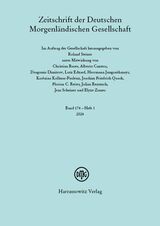Autor: Werner Diem
- «
- 1
- »
Die Suche erzielte 3 Treffer.
Religiöse Vorstellungen im frühen Islam (Papyrus Heidelberg A 506) article
,,Wie der Amboß des Schmiedes“. Vergleiche aus dem Umfeld des Schmiedes in der altarabischen Poesie research-article
- «
- 1
- »
